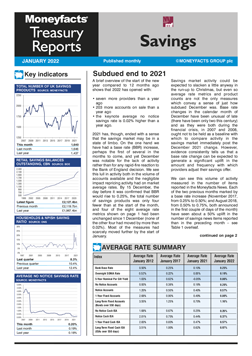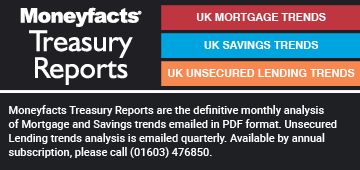Rachel Springall, Finance Expert at Moneyfacts, said:
“After a lengthy absence, ISA season is back around the end of a tax-year, with the market seeing the highest uplift in average rates month-on-month in a decade. Those savers who are comparing deals to utilise their 2022/23 allowance will find much better rates on average compared to a month ago, both for variable and fixed ISAs. The improvement to the market over the past year is positive as it’s worth noting that rates fell to record lows in 2021. Compared to a year ago, both the average one-year fixed ISA and longer-term fixed ISA rates have more than doubled.
“Encouragingly for savers, both competition and the recent back-to-back Bank of England base rate rises are elevating interest rates across the savings spectrum. The rate war that has raged within the top rate tables for both fixed bonds and ISAs month-on-month will be positive news for savers who want to lock their cash away for a higher return than they could receive on a variable rate. However, whether someone is comfortable to invest longer-term with rising interest rates remains to be seen. Indeed, according to the Bank of England, there were notable outflows of funds in February from time deposits (£313 million), but significant inflows into sight deposits (£3.5 billion).
“As interest rates rise, savers may well wish to keep their money close to hand so they can switch quickly for a higher return, and thankfully, easy access accounts have seen notable uplift month-on-month, with a rise of 0.08%, this is the biggest rise since August 2007. In the months to come, providers may well improve rates further, and we are already seeing competition return to this sector from challenger banks, some of which are paying 1% or more. However, it may be some time yet before savers see variable rates return to pre-pandemic levels. Whether savers choose an easy access account or fixed, it’s important for them to be conscious of the shelf life of a deal, as this month the average shelf life of a fixed bond fell to 55 days, the lowest number of days since 2021. Keeping a close eye on the market is crucial both for savers to secure a top rate, and for savings providers to keep ahead of the competition.”
Rachel Springall, Finance Expert at Moneyfacts, said:
“After a lengthy absence, ISA season is back around the end of a tax-year, with the market seeing the highest uplift in average rates month-on-month in a decade. Those savers who are comparing deals to utilise their 2022/23 allowance will find much better rates on average compared to a month ago, both for variable and fixed ISAs. The improvement to the market over the past year is positive as it’s worth noting that rates fell to record lows in 2021. Compared to a year ago, both the average one-year fixed ISA and longer-term fixed ISA rates have more than doubled.
“Encouragingly for savers, both competition and the recent back-to-back Bank of England base rate rises are elevating interest rates across the savings spectrum. The rate war that has raged within the top rate tables for both fixed bonds and ISAs month-on-month will be positive news for savers who want to lock their cash away for a higher return than they could receive on a variable rate. However, whether someone is comfortable to invest longer-term with rising interest rates remains to be seen. Indeed, according to the Bank of England, there were notable outflows of funds in February from time deposits (£313 million), but significant inflows into sight deposits (£3.5 billion).
“As interest rates rise, savers may well wish to keep their money close to hand so they can switch quickly for a higher return, and thankfully, easy access accounts have seen notable uplift month-on-month, with a rise of 0.08%, this is the biggest rise since August 2007. In the months to come, providers may well improve rates further, and we are already seeing competition return to this sector from challenger banks, some of which are paying 1% or more. However, it may be some time yet before savers see variable rates return to pre-pandemic levels. Whether savers choose an easy access account or fixed, it’s important for them to be conscious of the shelf life of a deal, as this month the average shelf life of a fixed bond fell to 55 days, the lowest number of days since 2021. Keeping a close eye on the market is crucial both for savers to secure a top rate, and for savings providers to keep ahead of the competition.”











